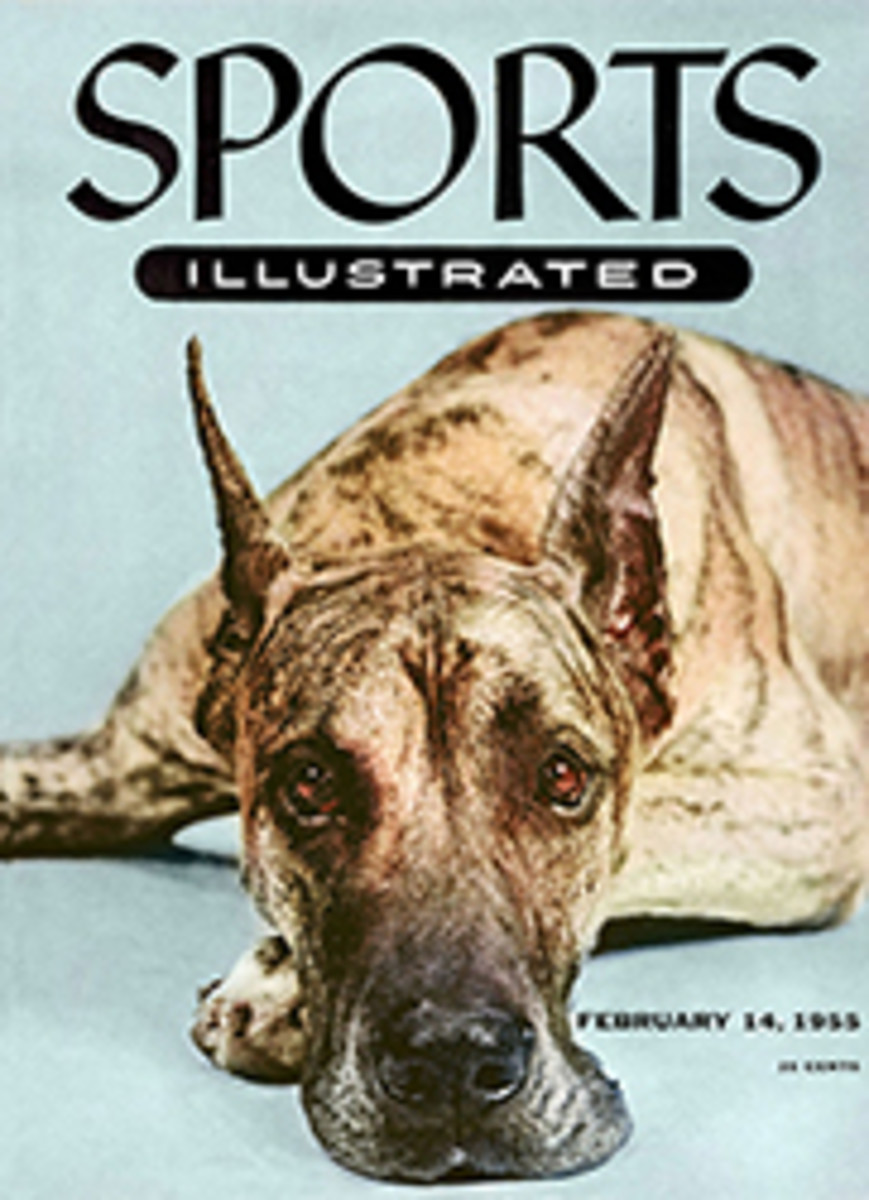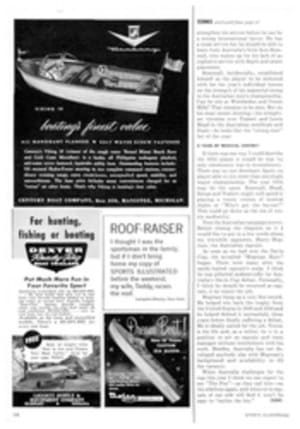
HOW'S YOUR RT?
You're a very good driver, of course; practically every driver thinks he is. But—how's your Reaction Time? Whether you run a family sedan as transportation or a sports car for fun, your RT is the biggest single factor influencing highway accident statistics. RT is the time lapse between your awareness of a sudden emergency—a veering stray dog or an exuberant tot in headlong flight across a busy street—and your physical response (braking, steering) to this situation. At 30 mph your car covers 44 feet per second; one-tenth of a second variation in RT can mean the difference between a near thing and tragedy. Just one-tenth of a second!
Statistics show that Grand Prix race drivers (such as Stirling Moss) have an RT of .39 to .40 of a second. Sports car drivers average half a second, trained Greyhound bus drivers .75 second and Joe Blow in his family car runs around 1.5 seconds. Mr. Blow is thus twice as slow as the bus driver and three times slower than an experienced sports car driver in reacting to an emergency.
A SALUTARY JOLT
Whether you drive a sports Jaguar or a De Luxe Supermatic Eight, a scientific check on your RT and general aptitude might give you a salutary jolt. It gave me one—and I have driven in 100 sports car races during the past eight years. I agreed to be put through the wringer at the Greyhound bus company's training school in Cleveland, Ohio. Other civilian organizations (the AAA and certain insurance firms) offer such test facilities, but none is as thorough as Greyhound, which can claim much of the credit for buses showing the lowest fatal accident rate of any motorized conveyance in the U.S.—only .13 fatalities for each 100,000,000 passenger miles covered, compared with .16 in trains and 2.9 in passenger autos or cabs.
The conditions governing the Greyhound Drivers' School Test were defined beforehand by Safety Director Roy Alexander and Safety Instructor Roy Harpster. No fakes or favors; nothing glossed over for the sake of a story.
In the Greyhound schoolroom on Carnegie Street, 20 desk-chairs faced a sectioned diesel engine (95% of Greyhound buses are now powered by supercharged diesels), a blackboard and an easel with a sheaf of technical charts. Around the walls were exhibits acquainting drivers with the mechanism of the buses: brake layout, supercharger, ignition unit, heat control system, clutch assembly, variable pitch cooling fan. There were also various bent and broken items reminding that neglect and abuse cost money.
The tests began with Reaction Time. For this a contraption is used which consists of two parallel bob-weights suspended on strings and held at an angle by cotter pins. The instructor's bobweight is connected to a lever on which is mounted a bull's-eye card. You watch the card—not the instructor. When he releases the cotter pin by pushing on a key, the card moves as the bobweight swings free. The instant the card moves, you release your own cotter pin. The time taken for the two bobweights to swing in unison is the factor used in calculating your RT. You get seven tries and nine swings of your bobweight will pass you. My average score was four swings. That was reassuring.
Next comes the peripheral vision machine, to determine the efficiency of your side vision. This is a semicircular box with a nose pad at eye level. Two levers at the sides are swung horizontally toward the center by the instructor. The moment you see him moving either, or both, you holler, giving details. Result of two tries: left eye, 108 and 107°; right eye, 105 and 103°. Total score, 423. Passing figure, 390. That made me feel fine.
Now for the depth perception machine—a lighted box with an oblong front opening through which you can see two vertical pegs, free to slide in parallel grooves scaled in millimeters and controlled by strings. You sit 20 feet away with a string in each hand. Then the instructor moves the pegs back and forth a few times to confuse you. It's your job to bring the two pegs in line. This is a tough one, with deceptive lights and shadows. It flunks 27% of applicants. Four tries are permitted and an average error of 20 millimeters is the passing mark. My best effort was a five-millimeter error and my average 19—which was okay.
Finally, I was put through the definitive RT test in a real Greyhound bus, 35 feet long, eight feet wide, weighing 14 tons and powered by a 180 hp, rear-mounted, six-cylinder diesel. I had never before driven any bus, let alone such a mammoth. After a few miles on Route 42, Instructor Harpster handed over the wheel to me. "It's all yours. If you make out, you can take the defensive driving brake test, but we don't usually let drivers do this until they've had a month to get used to handling the bus."
A BANG AND A BLOB
After 10 miles of dodging road repair squeezes and other traffic hazards, Harpster nodded: "Okay. You'll do. Stop while I fix the brake detonator." He clamped a box containing two cartridges to the front of the bus. A long string that came in through the driver's window was fixed to the firing pin of one. "Now," said the instructor, "I'll sit behind you and hold the string. When I pull it you'll hear a bang. That bang will drop a blob of yellow paint on the road. The instant you hear it, tromp hard on the brake. You'll hear another bang as the second cartridge goes off and drops another blob of paint. The distance between the two blobs converted into seconds at any given speed will be your RT. I won't tell you when I'm going to yank the string—so watch out!"
On my first try the two blobs were 45 feet 5 inches apart, traveling at 35 mph. The second time, at the same speed, the gap was 43 feet, 2 inches, giving an RT of .84 second. "We'll hire you," grinned Harpster. "I could get your RT down to between half and three-quarters of a second and make a bus driver out of you in four days."
A sports car racer ought to be at least that good—maybe better. On the other hand, qualifying at Greyhound is no small compliment. Achieving the driving finesse of a Greyhound bus operator may not be one of your ambitions, but polishing up your RT is more important than doing the chrome-work. Why not try it some day soon? It can save your life.
PHOTO
BENTLEY IN BUS

